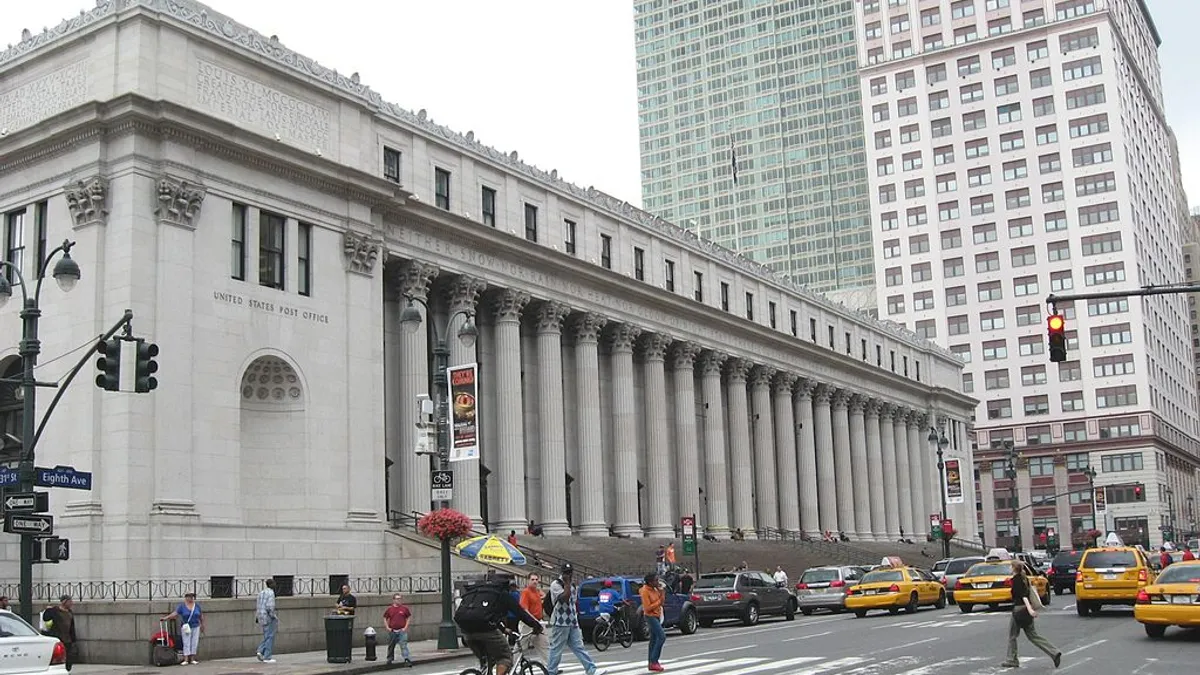Dive Brief:
- New York officials announced Friday that the Empire State Development Corporation had finalized the financing arrangement for the $1.6 billion conversion of the Farley Post Office Building into a train hall for the Pennsylvania Station rail hub, according to Crain's New York Business.
- The state ($550 million), the Port Authority of New York and New Jersey ($150 million), Amtrak ($105 million), the Metropolitan Transportation Authority ($100 million) and federal grants ($65 million) will help finance the project, and a partnership between Related Cos., Vornado Realty Trust and Skanska USA will contribute $630 million in exchange for operating rights once the new train hall is complete, according to the Commercial Observer. The partnership will perform the renovation under a $1.26 billion design–build contract.
- The new Moynihan Train Hall will provide Penn Station commuters with 255,0000 square feet of extra space, as well as offer up 700,000 square feet of office and retail when complete in 2020.
Dive Insight:
The Related–Vornado–Skanska joint venture won the project back in September, and it is one of the few major New York City construction projects to be performed under the design–build delivery method, along with the Jacob K. Javits Center and the Tappan Zee Bridge.
New York Gov. Andrew Cuomo has consistently praised design–build as a way to get projects done on schedule and within budget and proposed legislation that would allow it to be used throughout the state, with the exception of New York City. Despite many city officials expressing a desire to use design–build, critics argue that it could reduce the participation of unions and that city engineers, who are a significant part of the design process, could lose their jobs.
Earlier this month, New York City Department of Transportation officials appealed to state lawmakers for permission to use design–build on eight projects, most notably the Brooklyn–Queens Expressway. The NYCDOT said that being able to use design–build could save $300,000 and shave two years from the construction schedule on that project alone.












